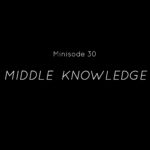The image of Jesus as the vine and believers in him as the branches poses a significant problem for those who contend that John affirms the categorical perseverance of the saints. For in this passage those who do not persist in faith by failing to bear fruit (i.e., to live a transformed life) are presented as being like branches that are cut off from the Vine (Christ) and thrown into the fire to be destroyed.
John 15 is clear that “every branch in me that does not bear fruit [my Father] takes away” (v. 2). That is why Jesus emphasizes that those who believe in him must “remain (abide, stay) in me” (v. 4). But “if anyone does not remain in me, he is thrown out like a branch and dries up and they gather them and throw them into the fire and they are burned” (v. 6). Only “if you keep the commandments” do you “remain in my love” (v. 10).
Obviously the image of branches connected to the vine represents persons who are genuinely “in Christ” through the possession of his Spirit. The removal of branches that do not bear fruit and their throwing into the fire is a clear illustration of the falling away of genuine believers who no longer continue to keep his commandments and exhibit a transformed life.
My friend James White dealt briefly with the problem of John 15 (problem for James, not for me) in an article (see comments). I did not find it convincing. He points to the parable of the Sower as an example where Jesus uses similar language “to describe surface level or false believers.”
The Analogy of the Parable of the Sower in Mark 4
Yet the Sower analogy in Mark 4:3-9, 13-20 illustrates the opposite: the situation of believers that fall away from the faith they once genuinely held. Unlike the seed sown on the path, the seed sown on rocky ground does sprout, illustrating the implanting of the word of the gospel in their hearts as they “receive it with joy.” But they are insufficiently rooted and so “last only a short time.” When life’s “pressure and persecution arise because of the word they immediately fall away (stumble to their ruin).”
The seed sown among thorn bushes are adequately rooted and last for a while but “the cares of the world [or: this age] and the lure [or: deceitfulness, seduction] of wealth and the (sexual) desires for ‘other things’ enter and choke the word and it becomes unfruitful.” Clearly the image here is of once-genuine believers who fall away owing to external influences.
Only an “Outward Appearance of a Branch”?
James claims that the branches in John 15 that are removed only had the “outward appearance of a branch” without actually being a branch. The fact that these branches do not bear fruit is indicative of them being “apart from” the vine, apart from Christ.
Yet nothing in the analogy of John 15 suggests that the branches are not actual branches or are not really “in” the vine. Since Jesus is the Vine, obviously the image of branches connected to the vine represents persons who are genuinely “in Christ” which, after Christ’s resurrection, would be reinforced through the possession of his Spirit (the Paraklete [Advocate] of which he speaks often in the Farewell Discourse in chs. 13-16).
John 15 is clear that “every branch in me that does not bear fruit [my Father] takes away [or: removes]” (v. 2). Were the branches not genuinely “in me” they could not be removed. Jesus emphasizes that those who believe in him must “remain (abide, continue, stay) in me” (v. 4). The very concept of remaining presumes continuance in a genuine condition, not continuance in appearance only (what is the point of remaining in fake discipleship?).
James states that the branches that are not bearing fruit must have always lacked “a vital union with the vine” for otherwise they would bear fruit since “the fruitfulness of the branch is a function of the vine, not of the branch itself,” not “by its own effort,” which would be a “man-centered theology.” James is misrepresenting the views of those with whom he disagrees. No one is contending that the vine (Christ) does not supply what is needed for growth. The necessity of non-meritorious acquiescence and effort by the branch is not antithetical to this observation.
The Image Conveyed of Branches Genuinely Attached to the Vine
The text states: “If anyone does not remain in me, he is thrown out like a branch and dries up and they gather them and throw them into the fire and they are burned” (v. 6).
Note that the “drying up” of the branch does not occur until after it is removed from the vine. It is drawing sustenance from the vine, but it is not bearing fruit. Something is going in but nothing is coming out. Compare the parable of the talents: An investment is made in the master but the investment is not paying off (Matt 25:14-30). Only “if you keep the commandments” do you “remain in my love” (v. 10). The removal of branches that do not bear fruit and their being throw into the fire is thus a clear illustration of the falling away of once-genuine believers who fail to exhibit a transformed life.
Not Applied to Judas but to the Eleven
James thinks that the analogy of the branches has in view Judas, who (allegedly) was never a true believer (6:64-71). Yet Judas has already left (13:30) and Jesus is now speaking to those that remain with him. Mark states that Jesus ate his last supper with “the Twelve” (Mark 14:17). John 13-14 specifically mentions that among those with him were Simon Peter, the beloved disciple (presumably John), Thomas, Philip, and Judas (not Iscariot; mentioned in the list of 12 and 11 in Luke 6:16; Acts 1:13; probably to be identified with Thaddaeus). They are identified in John 15:27 as those “with me from the beginning.” Jesus’ statement in 15:16 that “I chose you” echoes his remark to them in 6:70: “Did I not choose you the Twelve?” (“the Twelve” are otherwise mentioned in John’s Gospel only in 6:67,71; 20:24).
It is to these that Jesus exhorts that they must “remain in me, and I (will remain) in you…. I am the vine, you the branches…. If you keep my commandments, you will remain in my love…. You are my friends if you do what I am commanding you…. You did not choose me but I chose you and appointed you for the purpose that you should go and bear fruit and that your fruit should remain” (15:4-5, 10, 14, 16).
Jesus is manifestly exhorting the Eleven to “remain (abide, stay, continue in Jesus” and making this contingent on an ongoing transformed life. The flip side of the coin is: You will not remain in me, like branches to a vine, if you don’t continue to do what I have commanded you to do, especially loving one another (15:12-13, 17).
There is no questioning that the Eleven might not be genuine believers. They have been chosen by Jesus. Yet this “remaining in Christ” is not presented as a fait accompli, not even for the Eleven. The warning about being removed and thrown into the fire is a warning for them. They are the addressees.
In the context, the warning gains additional urgency from the fact that the pressures against them will be intense. “The world hates you” just as “it has hated me first before you,” which means that the world will persecute them just as it persecuted Jesus (15:18-25). This persecution will include being put out of the synagogue and, consequently, martyrdom (16:2). So Jesus “spoke these things to you in order that you may not stumble to your ruin (i.e., fall away” (16:1). “In the world you have pressures [or: stresses, distress, trouble, hardship]. But have courage: I have conquered the world” (16:33).
A Real Warning of Loss of Salvation
Obviously, the warning about being removed from Christ the Vine would lose its urgency and potency if the Eleven believed that they could never really be removed. The warning is real. The Eleven can be confident about their future fate, but not presumptuous. Their ongoing relationship with Jesus is still conditional.
They have to continue to acquiesce to Christ’s work in them, bearing the fruit that comes from keeping his commandments. If they don’t, they face removal from Christ. There is no “then they were never genuine believers” operative here. Whatever is meant by Jesus’ words in 6:37-45 and 10:28-29, these texts do not contradict the clear warning in John 15:1-17.
James White appears to find such a theology unacceptable, allegedly compromising God’s sovereignty and turning Christianity into a man-centered religion because it (again, allegedly) makes our salvation ultimately dependent on ourselves. Yet the author of the Gospel does not see the warnings in this light.
[This post was taken from Robert A. J. Gagnon’s Facebook page. The original post and comments may be found here.]





